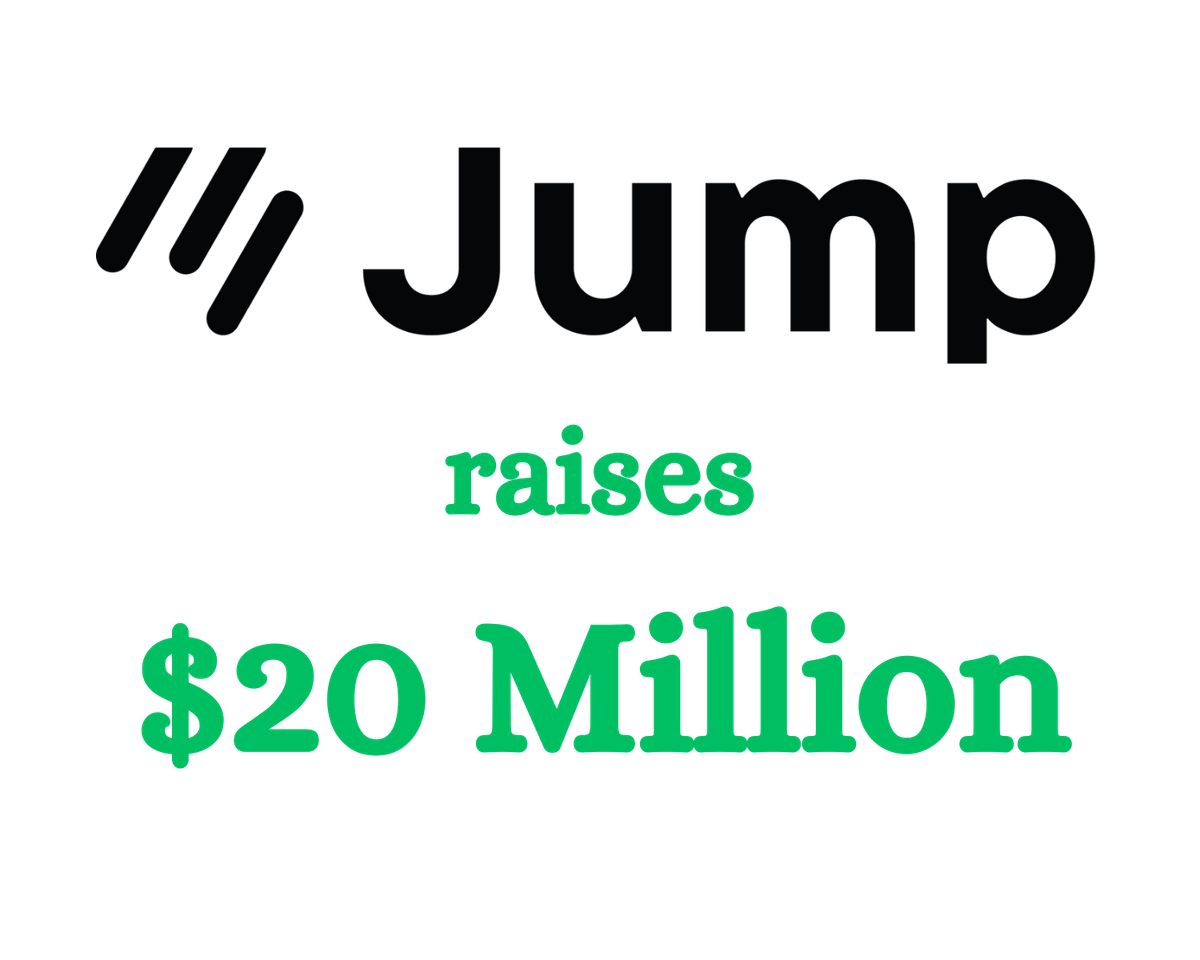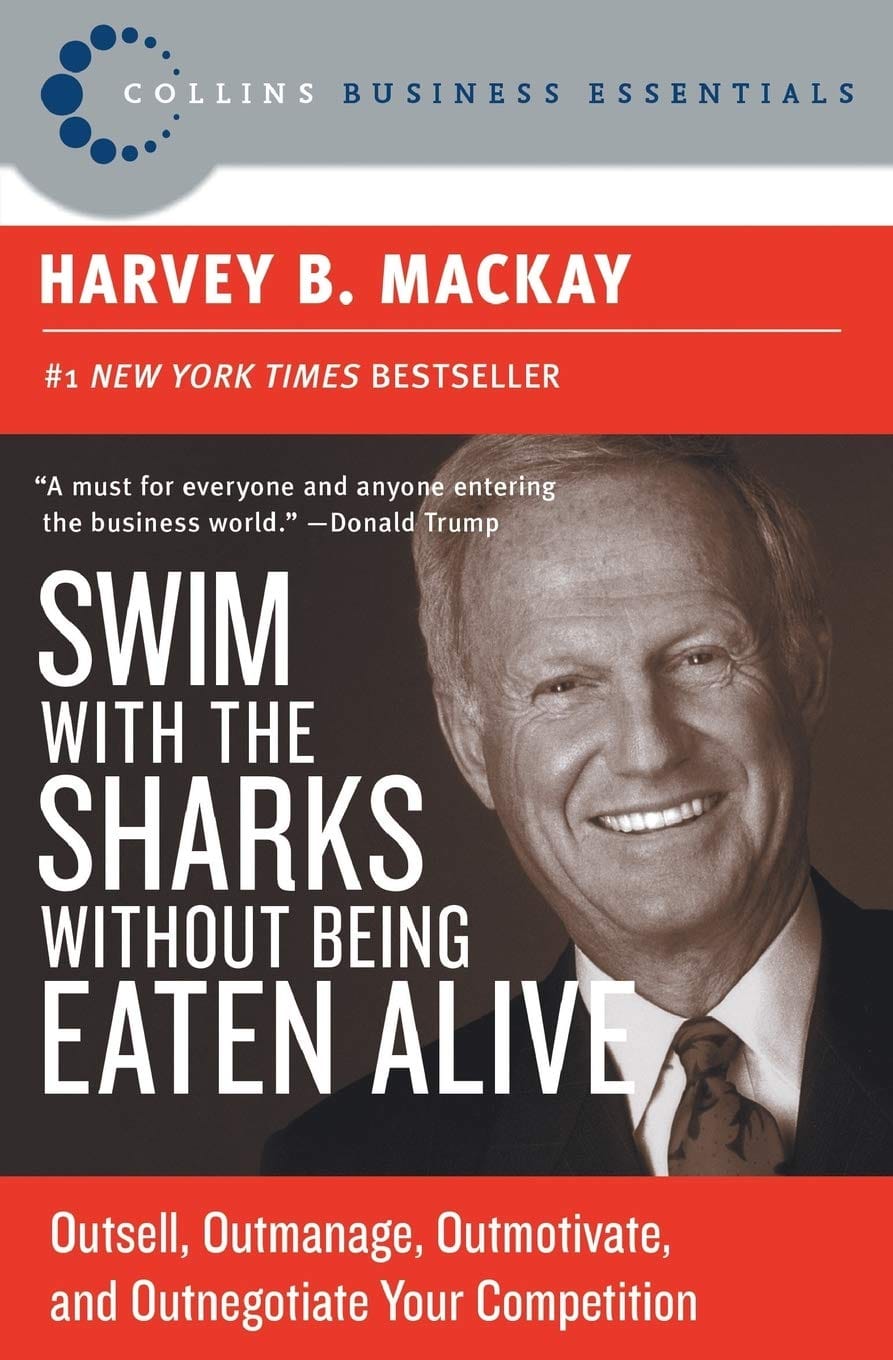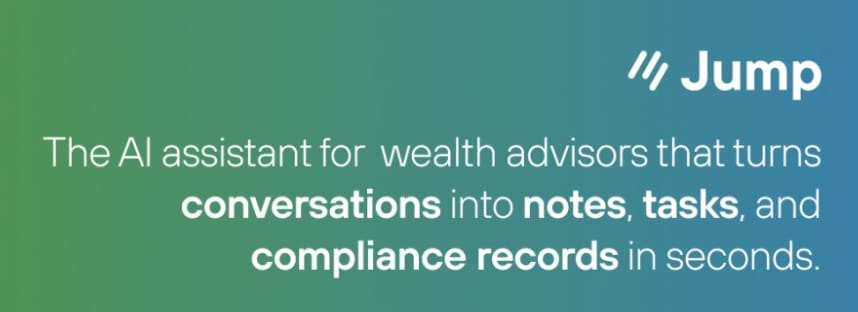With $20 Million in New Funding, Utah-based Jump Targets a Market Responsible for Over $128 Trillion

Yup, $128.4 trillion. That's the Total Addressable Market that Salt Lake City, Utah-based Jump is focused on.
That TAM, coupled with Jump's shocking ability to leverage artificial intelligence to make its end-users 10X more efficient (and successful), make it no surprise to this journalist that Jump just closed on $20 million in a Series A round of funding.
Here's the rest of the story.
The Jump Funding
On the surface, Jump's funding news release was very straightforward:
- A $20 million round of Series A funding,
- Led by Battery Ventures, one of the oldest (and most successful) venture capital firms — with over $13 billion in capital raised since its 1983 founding, plus
- Participation from new investor, Citi Ventures, as well as participation from existing investors
— Lehi, Utah-based Sorenson Capital, and
— Cottonwood Heights, Utah-based Pelion Ventures Partners.
And previously, Jump had raised $4.6 million since its launch in 2023, taking the firm to just under $25 million of external funding.
Fair enough, but what is it that Jump does? And why do its customers care so much about Jump?
Note-Taking: Pain Point No. 1 for Sales People and Account Managers Who Work for RIAs and IBDs
To get the lowdown on what it is that the Jump team uncovered as the top pain-point that its prospective customers deal with on a daily basis, I spoke with two of Jump's co-founders last Friday — CEO, Parker Ence, and President and Chief Operating Officer, Tim Chaves.

As it turns out, the answer is both obvious and complicated at the same time.
To backtrack for a moment, Jump is a Fintech, a financial technology company, focused on helping professionals who work at Registered Investment Advisory firms (RIAs) and Independent Broker/Dealer firms (IBDs) — think professional money advisors and stock brokerages.
Although these financial professionals help manage monies for individuals and organizations, make no mistake about it: They are also sales professionals.
So, as anyone who has ever worked in sales (or account management), it's not the initial sale that matters: It's the ongoing sales that are most important.
In other words, long-time sales success boils-down to answering this one question:
"How much revenue can I/we generate from this person, this account, over the entire 'life' of this relationship?"
In the business world, the answer to that question is defined as
Lifetime Value or Customer Lifetime Value. Or said another way: LTV or CLTV for short.
At the risk of denigrating the sales/account management role into one seen as merely transactional in nature, the best sales people/account managers learn that the more they know about their customers/decision-makers, the higher the likelihood they can serve them better (AND), as a result, generate more revenue dollars over the lifetime of that relationship.
Hence, the information needed/desired can be almost as varied as one's imagination.
That said, New York Times bestselling author Harvey Mackay felt that the closer you could get to answering 66 questions about every prospect / client, the more successful you were likely to become.

He encapsulated his sales wisdom into the "Mackay 66," which you'll find outlined in How to Swim with the Sharks Without Being Eaten Alive.
{NOTE: It's still one of the best business books I've ever read, even if it's over 20 years old now.}
What type of questions does Mackay suggest should be answered by enterprising sales people and account managers?
They include such queries as
- Where they were raised?
- Where do they live today?
- What's their marital status?
- Their educational background?
- Favorite colors?
- Favorite foods?
- Sports teams?
- Vehicle(s) they drive?
- Political leanings?
- Top vacation spot(s)?
- And on and on and on.
It's the type of data I tried to gather when I sold mens clothing for ZCMI while attending college.
It's also what I've done over my entire career, whether formally or informally.
Keeping track of all of that information by automating the note-taking process during conversations and meetings (virtual or face-to-face), is where Jump begins with its tool, Jump AI.
And it does so easily and seamlessly, dropping the gathered info directly into a user's CRM platform (Customer Relationship Management).
So naturally, Jump AI integrates directly with the most popular CRM apps today.
But it also ties into online meeting tools like Zoom, Microsoft Teams and Google Meet, as well as the most popular calendaring and messaging tools, meaning that Jump AI will automatically set reminders and appointments for its users as well.
Where Jump AI became really interesting to me, however, was learning that it can also provide users with "Sentiment Data" gathered from the recordings it makes for its users.
That means Jump AI can track and gauge the positive, negative and neutral feelings of consumers by using AI-empowered Neural Language Programming (NLP) algorithms. Way cool!
In explaining Sentiment Data, Ence suggested that such information can prove invaluable especially when one considers what occurs during multiple calls/meetings throughout an entire day.
"The sentiment analysis is very simply looking for analysis around (the topics covered in a one-hour client meeting, such as) .... Are you grateful about certain things? Are you happy about certain things? Are you concerned about certain things? Are you afraid or confused? ... It's a way to bubble-up to the top (observations like), 'Oh, I should really just make sure about this (topic).' Or, 'Would they be willing to share a referral because they were so happy with how things are going?'"
So naturally, yes, Jump AI can be customized to track
- Specific keywords and phrases,
- Verbal consents, and
- All other sorts of data and information.
Chaves further explained that given that most advisors work with hundreds of clients, trying to remember everything from each meeting/call is literally impossible.
"It's actually really difficult to remember all of those qualitative relationship builders that came out in the last meeting," Chaves added. "We make it very easy to surface what happened in the last meeting ... to bring up some of those very human touchpoints (to) help build that relationship."
The company news release says that the bottomline benefit of its approach is that
"(Jump AI) enabl(es) RIA and Broker Dealer teams to (handle) ... meeting prep, note taking, compliance documentation, CRM updates, client recap email, financial data extraction, and follow-up tasks ... in 5 min, not 60."

But it's not just about using AI to figuratively improve one's recall; it's also about Compliance.
Compliance and More
The other massive pain point faced by financial professionals is Compliance, something that Jump AI also handles with ease.
In a nutshell (for those not familiar with the regulatory and legal aspects of Compliance in the financial advisory and wealth management world), Investopedia explains that Compliance Departments ...
"... work to meet key regulatory objectives to protect investors and ensure that markets are fair, efficient and transparent. They also seek to reduce system risk and financial crime."
How do Compliance officers and departments do this? By addressing a wide variety of potential issues, ranging from answering such basic questions as —
- "Did ABC customer actually place an order to buy or sell a certain security at a particular time on a given date at a set price?" —
as well as more challenging/difficult questions, like
- "Did XYZ financial professional share 'Insider Information' with ABC customer about a given stock or security?"
That's why Jump AI was built from the ground-up to also meet the needs of Compliance officers and departments across RIAs and IBDs of all shapes and sizes.
In fact, Jump lists some of the largest RIAs and IBDs among its now over 1,000 clients, including LPL Financial (with over $1 trillion in Assets Under Management) and Solidarity Wealth, with over $510 billion in AUM.
Taken in concert, I wasn't surprised to learn that Jump snagged the
- 2024 Wealthtech Startup of the Year award from datos INSIGHTS, and the
- 2024 Best in Show award at the Wealth Management EDGE Tech Demo Competition by Wealth Management.com,
among other honors.
So what's next?
As the company explains in its funding release,
"... Jump plans to accelerate product innovation, building out an ever growing suite of advisor specific AI workflows and agentic AI work outputs. Jump will also expand sales and support to meet intense market demand, deepening industry partnerships."
For readers interested in learning more about Jump AI and the company, I invite you to turn to this video on Jump's YouTube account.
Jump introductory video on YouTube downloaded 12 February 2025.
In the meantime, congrats to Team Jump on the latest funding round.
One More Thing
That outrageous $128.4 trillion figure found in the headline and lede paragraph of this report?
That's the latest data from the Investment Advisor Industry Snapshot 2024 published jointly by the Investment Adviser Association (IAA) and COMPLY.
In a nutshell, the Report says that among investment advisers registered with the U.S. Securities and Exchange Commission, these financial professionals had $128.4 trillion in AUM in 2023, tying a record set in 2021.
So ... is $128.4 trillion an actual TAM (Total Addressable Market) for Jump? No, it's not.
However, given that ResearchAndMarkets.com reported in January that the wealth management industry had revenue of $1.8 trillion in 2023, that suggests to me that Jump's Serviceable Obtainable Market (SOM) is probably somewhere in the $20 billion range, which still makes it a massive opportunity.
Publisher's Note
This article/report was originally published and distributed to our Subscribers at approximately 06:20am (MT) on Wednesday, 12 February 2025.
However, if this report/article came to your attention sometime after this date/time and you'd like to change that, then (to become a subscriber), please follow the steps below.
Simply,
1. Click on a "Subscribe" button on any Utah Money Watch webpage (visit www.UtahMoneyWatch.com),
2. Enter in your name in the proper field in the popup window that appears on-screen, and
3. Enter your preferred email address in the proper field too.
That's it. And "Yes," it really is that simple.
For context, the purpose of Utah Money Watch is to publish financial / monetary news, information, context, and analysis NOT available through any other source.
[You might think of us as the inverse of Bloomberg, CNBC, and/or The Wall Street Journal. In other words, we are passionately focused on uncovering the most important monetary, financial, and/or business news and information that impact the organizations and people of Utah first, followed by regional news/info second, and national/international info/news last of all.]
So ... if you're you interested in timely Utah-focused monetary, financial, and/or business news, context, and analysis, content NOT currently available through any other source, then subscribe today.
Thanks.
Team Utah Money Watch
With nearly 25-million-proofpoints,
See https://jumpapp.com/press/jump-closes-20-million-series-a-funding-round-led-by-battery-ventures
See also https://www.youtube.com/watch?v=f_RZ6r2WbyE
JUMP's Online Media Kit: https://drive.google.com/drive/folders/1Tf1TJ1FgltkKUsTGSUEnU6bvhi_wOtN6




Comments ()